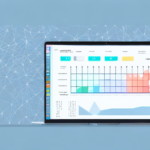Understanding Inventory Valuation
Inventory valuation is a fundamental aspect of managing a business’s inventory. It involves determining the monetary value of the stock a company holds at any given time. Accurate inventory valuation is crucial as it directly impacts financial statements, tax obligations, and overall business decision-making. This article delves into the various inventory valuation methods, their advantages and disadvantages, and provides guidance on selecting the most suitable method for your business.
Importance of Inventory Valuation
Proper inventory valuation offers numerous benefits:
- Accurate Financial Statements: It ensures that assets are accurately represented on the balance sheet.
- Tax Compliance: Correct valuation affects the cost of goods sold (COGS), influencing taxable income.
- Inventory Management: Helps in maintaining optimal stock levels, reducing excess inventory or stockouts.
- Decision Making: Provides insights into profitability, pricing strategies, and cost management.
Common Inventory Valuation Methods
Choosing the right inventory valuation method is essential for reflecting the true value of inventory and business performance. The primary methods include:
First-In, First-Out (FIFO)
The FIFO method assumes that the oldest inventory items are sold first. This approach often aligns with the actual flow of goods, especially for perishable items.
- Advantages:
- Reflects actual inventory flow for many businesses.
- Produces higher ending inventory values during inflation periods.
- Minimizes the risk of inventory obsolescence.
- Disadvantages:
- Can result in higher taxable income during inflation.
- May not match current market costs with current revenues.
Last-In, First-Out (LIFO)
The LIFO method assumes that the most recently acquired inventory is sold first. This can be beneficial in certain economic conditions.
- Advantages:
- Matches current costs with current revenues, potentially reducing taxable income during inflation.
- Provides a tax benefit in periods of rising prices.
- Disadvantages:
- Not compliant with International Financial Reporting Standards (IFRS).
- Results in lower ending inventory values.
Weighted Average Cost Method
This method calculates the average cost of all inventory items available for sale during the period and uses this average to value ending inventory and COGS.
- Advantages:
- Simple to apply and understand.
- Smooths out price fluctuations over the period.
- Disadvantages:
- May not match actual cost flow of specific inventory items.
- Less precise in reflecting current market conditions.
Specific Identification Method
Each inventory item is individually tracked and valued based on its actual cost. This method is typically used for high-value or unique items.
- Advantages:
- Most accurate method of inventory valuation.
- Directly matches costs with revenues for each specific item.
- Disadvantages:
- Time-consuming and administratively burdensome.
- Impractical for businesses with large volumes of similar items.
Selecting the Right Inventory Valuation Method
Choosing the appropriate inventory valuation method depends on several factors:
- Nature of Inventory: Perishable goods may be better suited for FIFO, while non-perishable items might benefit from LIFO or Weighted Average.
- Economic Environment: During inflation, LIFO can reduce taxable income, whereas FIFO may present higher asset values.
- Regulatory Standards: Compliance with accounting standards (e.g., IFRS does not permit LIFO).
- Business Goals: Consider whether the aim is to minimize taxes, present higher asset values, or achieve cost matching.
It’s advisable to consult with a financial advisor or accountant to evaluate the best method tailored to your business needs.
Impact on Financial Statements and Taxes
The chosen inventory valuation method affects various aspects of financial reporting and taxation:
- Cost of Goods Sold (COGS): Determines gross profit and net income.
- Balance Sheet: Influences the valuation of current assets.
- Tax Obligations: Affects the taxable income, especially in varying economic conditions.
For detailed insight into how these methods impact financial statements, refer to authoritative sources such as the Financial Accounting Standards Board (FASB) or the International Accounting Standards Board (IASB).
Best Practices for Inventory Valuation
Implementing effective inventory valuation practices can enhance accuracy and efficiency:
- Use Reliable Inventory Management Software: Automate tracking, valuation, and reporting processes.
- Regular Audits and Reconciliation: Conduct periodic physical counts and reconcile with inventory records.
- Consistent Method Application: Apply the chosen valuation method consistently to ensure comparability over periods.
- Stay Updated with Accounting Standards: Ensure compliance with current financial reporting requirements.
- Train Staff: Educate employees on inventory procedures and valuation methods to maintain accuracy.
Technological Advancements in Inventory Valuation
Modern technology has revolutionized inventory valuation by introducing advanced tools and methodologies:
- Inventory Management Systems: Software solutions like Oracle Inventory Management or SAP Inventory Management streamline tracking and valuation processes.
- Radio-Frequency Identification (RFID): Enables real-time tracking of inventory movements, reducing errors and improving accuracy.
- Artificial Intelligence (AI) and Machine Learning: Predictive analytics assist in forecasting inventory needs and optimizing valuation.
- Blockchain Technology: Enhances transparency and traceability in the supply chain, ensuring accurate inventory records.
These technologies not only improve efficiency but also provide deeper insights into inventory dynamics, aiding strategic decision-making.
Future Trends in Inventory Valuation
The landscape of inventory valuation is continually evolving, influenced by technological innovations and changing business environments:
- Increased Automation: Greater reliance on automated systems for real-time inventory tracking and valuation.
- Integration with IoT: Internet of Things (IoT) devices facilitate seamless data collection and inventory management.
- Enhanced Data Analytics: Advanced analytics provide more precise valuation models and predictive insights.
- Sustainability Considerations: Incorporating environmental costs and sustainability metrics into inventory valuation.
- Global Standardization: Efforts towards harmonizing inventory valuation standards across different regions.
Staying abreast of these trends ensures that businesses remain competitive and maintain accurate financial reporting.
Common Mistakes to Avoid in Inventory Valuation
Avoiding common pitfalls can prevent inaccuracies and financial discrepancies:
- Inconsistent Method Application: Switching methods frequently can distort financial comparisons across periods.
- Ignoring Obsolete Inventory: Failing to account for unsellable or outdated stock can overstate asset values.
- Poor Record-Keeping: Inaccurate or incomplete inventory records lead to valuation errors.
- Neglecting Regular Audits: Omitting periodic checks increases the risk of discrepancies and fraud.
- Overlooking Market Trends: Not adjusting valuation methods in response to economic changes can impact financial accuracy.
Conclusion
Inventory valuation is a critical component of business operations, affecting financial accuracy, tax obligations, and strategic decision-making. Understanding the various valuation methods—FIFO, LIFO, Weighted Average, and Specific Identification—enables businesses to choose the most appropriate approach based on their unique needs and market conditions. Embracing technological advancements and adhering to best practices further enhances the accuracy and efficiency of inventory valuation. As businesses navigate evolving economic landscapes, staying informed and adaptable in inventory management strategies will be paramount to sustained success.




















